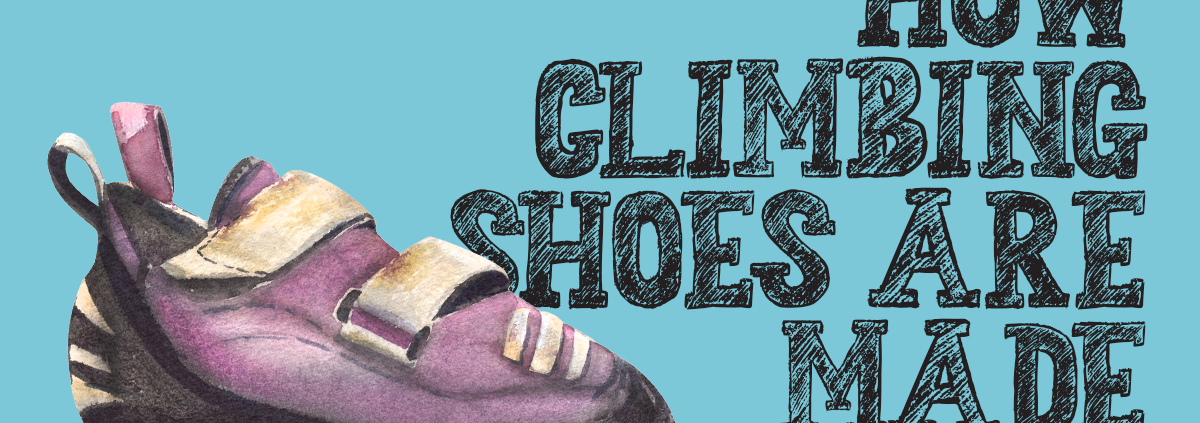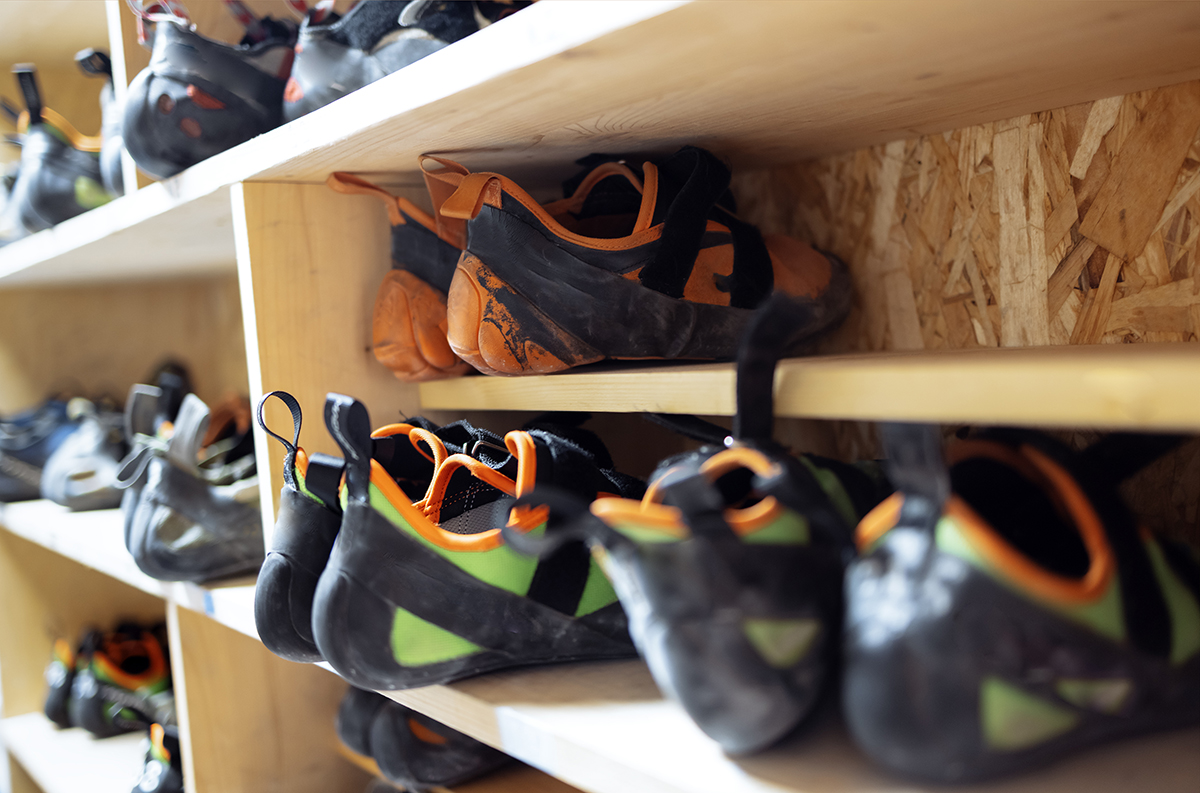How Climbing Shoes Are Made
A Brief Overview
Climbing shoes are a crucial piece of gear for any climber. They connect you to the wall and help you scale new heights. Unlike street shoes, climbing shoes are engineered for precision, grip, and support.
But how are these specialized shoes made? From raw materials to the final product, the process blends craftsmanship, science, and innovation to create footwear that enhances climbing performance.
Why Climbing Shoes Matter
Climbing is a game of millimeters. A single misstep can mean failure or success, falling off a route or sending your project, going home empty-handed, or winning gold at the Olympics.
Climbing shoes provide the precision needed to place feet on tiny footholds, grip to stay on the wall, and the comfort to endure long routes. Their snug fit and specialized rubber soles help climbers stand on the dime edges with their toes.
Before the invention of modern climbing shoes, climbers relied on bare feet, heavy boots, or basic canvas sneakers. The 1970s brought a revolution with the introduction of sticky rubber soles, changing the sport forever.
What Materials Are Used in a Climbing Shoe?
The most defining feature of a climbing shoe is its rubber sole. High-friction rubber, formulated specifically for climbing, maximizes a climber’s ability to stick to rock and artificial holds. Companies have proprietary rubber blends that balance durability, grip, and sensitivity.
The upper part of a climbing shoe plays a key role in comfort and fit. Traditional leather uppers stretch over time, molding to the climber’s foot, while synthetic materials provide consistency and minimal stretch. Advances in textiles have led to breathable, odor-resistant materials that improve durability without sacrificing comfort.
The midsole and toe box determine how stiff or flexible a shoe feels. Stiff midsoles provide better support for standing on small edges, while softer shoes allow for increased sensitivity.
The Manufacturing Process of Climbing Shoes
Creating a climbing shoe begins with extensive research and development. Engineers and designers collaborate with climbers to test prototypes, ensuring each model meets the specific demands of different climbing styles.
Once the design is finalized, the rubber sole is crafted. The process involves heating and molding the rubber to the precise thickness and shape. The right balance of pressure and temperature is crucial. Too soft, and the shoe wears out quickly; too hard, it loses the necessary stickiness.
The shoe’s components are then meticulously stitched and glued together by skilled craftspeople. This step requires an unwavering attention to detail, ensuring that no pressure points are created and that the shoe maintains a snug, performance-oriented fit. This precision in the manufacturing process instills confidence in the quality of your climbing gear.
Each pair undergoes rigorous quality control before hitting the market. Factory testers examine everything from the uniformity of rubber application to the shoe’s structural integrity.
Types of Climbing Shoes: Neutral, Aggressive, and Moderate?
Climbing shoes come in different shapes, each catering to a specific climbing style. Neutral shoes with a flat profile are ideal for all-day comfort. Moderate shoes have a slight downturn for a mix of performance and versatility. Aggressive shoes with a pronounced downward curve are designed for steep, technical climbs where precision is critical.
The closure system affects both convenience and fit. Velcro straps allow quick adjustments and are great for bouldering or gym climbing. Lace-ups provide a customizable fit, making them ideal for long routes. Slip-on shoes, often used for training or crack climbing, eliminate pressure points but require a precise fit and are extremely sensitive.
Sustainability and Innovation in Climbing Shoe Manufacturing
With sustainability becoming a priority, brands are experimenting with recycled rubber and vegan-friendly materials. Some manufacturers are reducing their environmental impact by repurposing rubber from old shoes and using plant-based adhesives while still delivering high-performance footwear. This shift towards sustainability makes climbers feel responsible and part of a more significant movement in the climbing community.
Many companies are shifting toward ethical production methods, such as using renewable energy sources and minimizing waste in the manufacturing process. Transparency in labor practices is also improving, ensuring safe working conditions for factory employees.
The Future of Climbing Shoes
Innovation is reshaping how climbing shoes are made. 3D printing allows for hyper-customized fits, while emerging innovative materials may one day adjust stiffness and flexibility based on the climb. The future of climbing shoe innovation is exciting and a testament to our sport’s continuous evolution.
Climbing shoes are a fusion of art and engineering, designed to meet the diverse needs of climbers worldwide. From material selection to craftsmanship, every step of the manufacturing process contributes to a high-performance product that enhances a climber’s ability on rock or plastic.
As technology advances and sustainability takes center stage, the evolution of climbing shoes will continue to push the boundaries of what’s possible in the vertical world.




